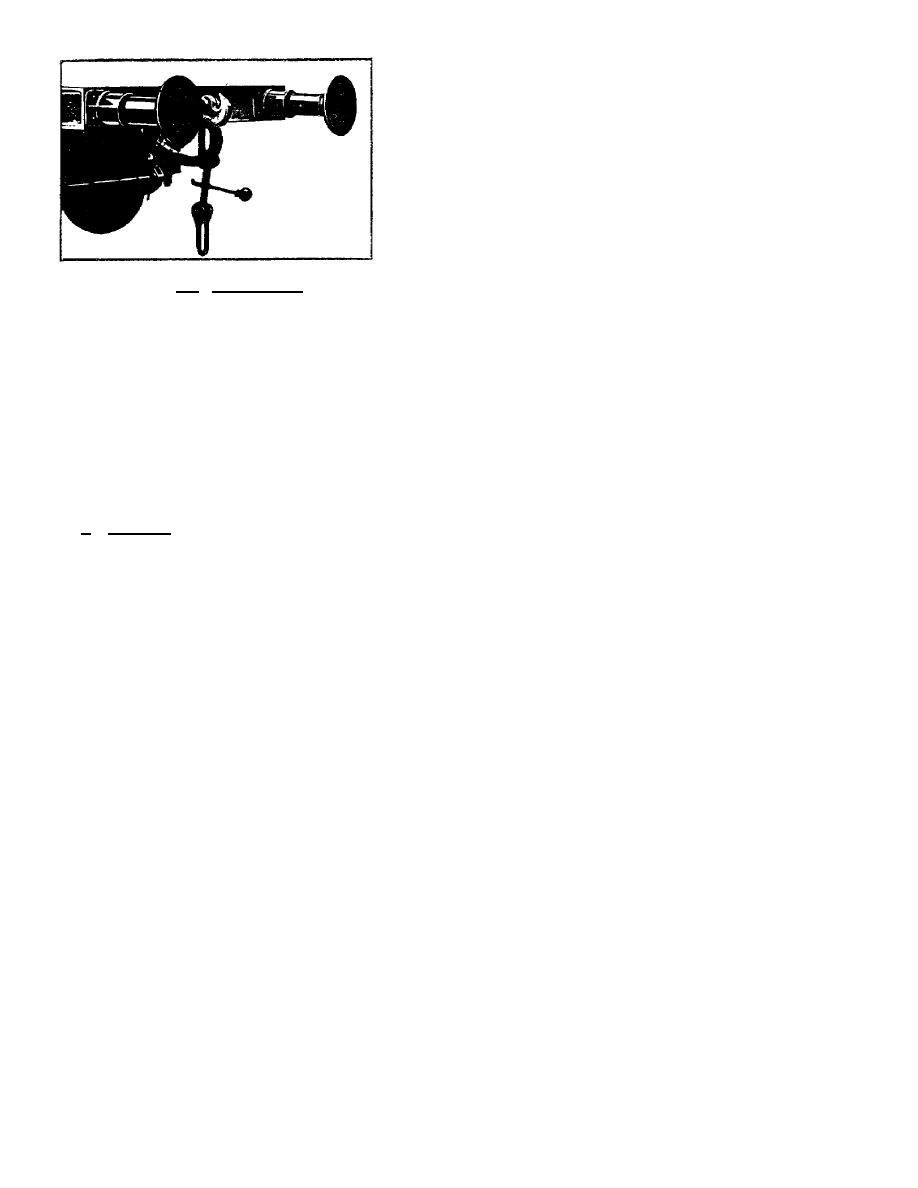
coupling toward the outer ends of the car. The buffer has a
housing, attached to the car, and a spring-loaded section
extending out of the housing. The coupling operation is
entirely manual.
To couple cars, the shackle of one screw coupler is
hooked over the hook on the other car; the lever tightens
the screw until all slack is taken up. Faces of the two
Figure 5.9. Side Buffers.
buffers on the one car should then be pushed squarely
against the faces of those on the other car. When the train starts or runs, the screw coupling carries the pulling
load; the buffers protect the cars and lading by absorbing jolts and shocks, and prevent cars from running
together--the function of the draft gear on U.S. equipment. To uncouple, the lever unloosens the screw until
there is enough slack to lift the shackle off the hook. Besides the danger to men working between the cars, this
type of coupling equipment makes switching a slow, time-consuming operation.
b. Willison. Working on the same general principles as the E coupler on U.S. equipment, the Willison
coupler has one marked difference: a transition device, shown in figure 5.10 as note six, makes it possible to
couple to the hook-and-link coupler. Although coupling is automatic like the E coupler, jolts and shocks are
absorbed by side buffers not by draft gear.
5.9. SUMMARY
Connecting the coupler to the car underframe, draft gear cushions the shock when cars are coupled
together or when train speed changes suddenly. Friction draft gear, found on most U.S. rolling stock, has a unit
of coil springs and a friction unit contained within a housing. As the springs compress, they push against the
plates and wedges of the friction unit, setting up resistance and permitting cars to start smoothly. Rubber draft
gear, used on locomotives, passenger cars, and some freight cars, offers the same resistance through a series of
rubber plates that absorb shocks during coupling.
71


 Previous Page
Previous Page
